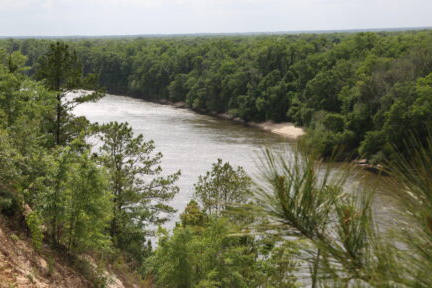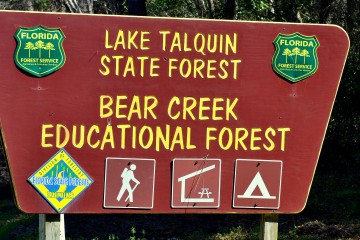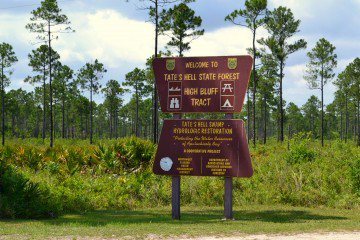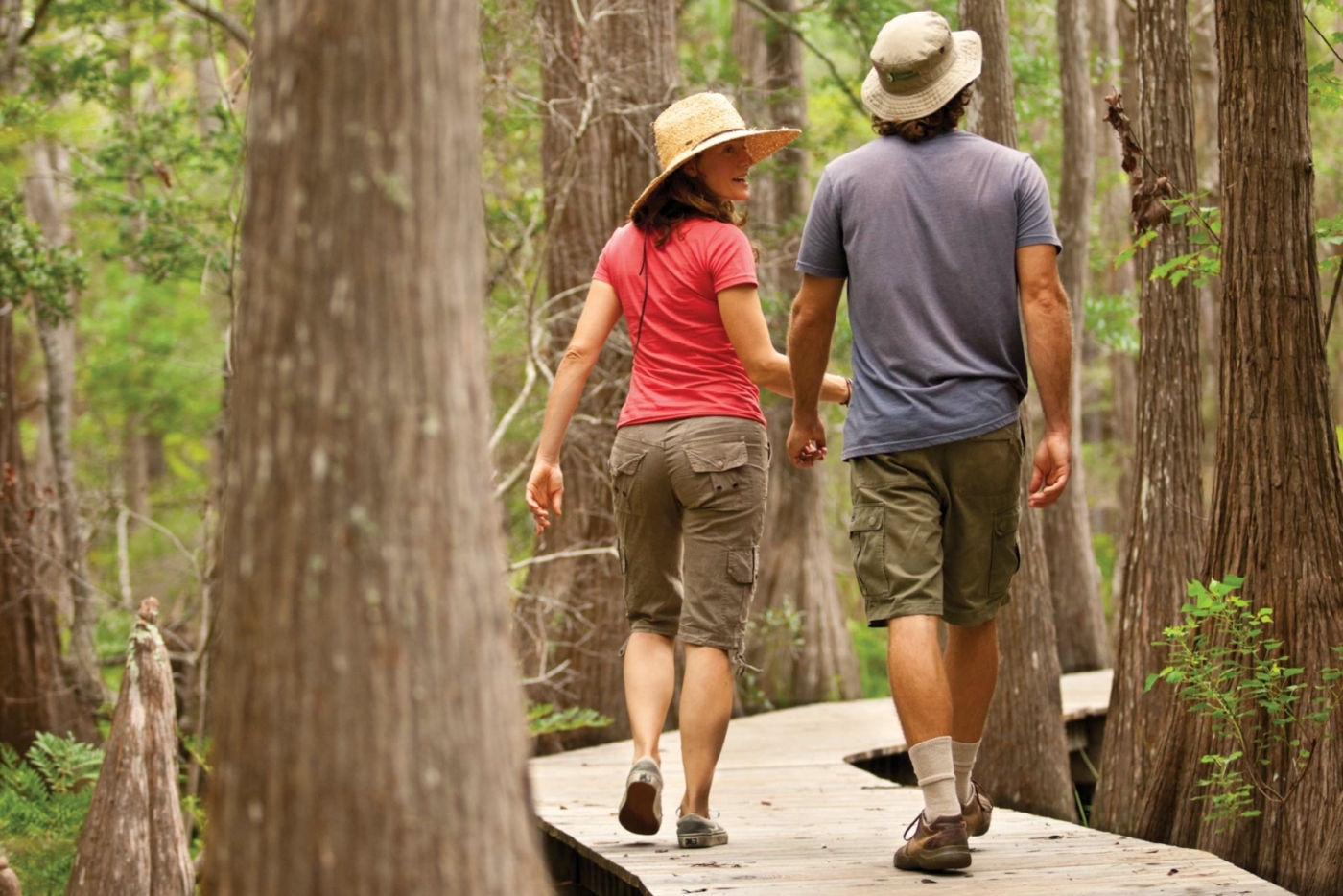Take a Tranquil Trek Through Nature
From steep cliff terrain to sandy shores, the hundreds of acres of protected forested lands and wildlife in Northwest Florida offers something for all levels and ages.
Apalachicola National Forest
The Apalachicola National Forest is the largest U.S. National Forest in Florida. It encompasses 632,890 acres which equals 988.89 square miles and is the only National Forest located in the Florida Panhandle. The forest provides water- and land-based outdoor activities such as off-road biking, hiking, swimming, boating, hunting, fishing, horseback riding, and off-road ATV usage. The Camel Lake Recreational Area includes a one-mile hike on the Florida National Scenic Trail.
The Apalachicola National Forest is in the southeastern conifer forests ecoregion. Areas of the national forest with dry, sandy soils support Florida Longleaf Pine sandhills and pine flatwoods. Sandhills are woodlands dominated by Longleaf Pine. Pine flatwoods are forests and woodlands on broad, sandy flatlands. Both of these pine communities are sustained by frequent prescribed fires.


Torreya State Park
Torreya State Park is Florida’s first State Park and like all other state parks a true gem. High bluffs overlooking the Apalachicola River make it one of Florida’s most scenic places. The park is named for the Torreya tree, an extremely rare species that grows only on the bluffs along the Apalachicola River. The park is a popular hiking destination as it serves as a training ground for hiking the Appalachian Trail. Other activities include camping, picnicking, and bird-watching. Over 100 species of birds have been spotted in the park. Forests of hardwood trees provide the finest display of fall color found in Florida. The main campground offers full-facility campsites and a yurt. Primitive campsites and a youth campground are also available.
Lake Talquin State Forest
Established in 1977, this consists of 16,326 acres of flatwoods, rolling uplands, swamps, sandhills, and hardwood forests. The forest has the distinction of offering access to two Outstanding Florida Waters: the Ochlockonee River and Lake Talquin. It offers scenic hiking, equestrian, and biking trails. Nature lovers will enjoy rare rhododendrons, rolling hills, and deep ravines with Bald Eagles, Osprey, and White-Tailed Deer.
Bear Creek Educational Forest is a 492-acre tract of Lake Talquin State Forest with hiking and camping opportunities as well as the audio-enhanced Living Forest trail, where the trees tell their own stories.


Tate’s Hell State Forest
Tate’s Hell State Forest is one continuous tract of land comprising over 185,000 acres. Conquering this wet and seemingly unproductive area for timber production was the focus of the private timber industry from the 1950s to early 1990s. During the 1960s and 1970s, the hydrology of the area was substantially altered in an attempt to establish extensive tracts of pine plantations and to enhance the production of pine timber. These alterations involved clearing of natural forests, construction of roads and associated ditches, followed by the planting of large dense stands of Slash Pine that were fertilized with phosphorus and nitrogen. To protect Apalachicola Bay from the severe freshwater runoff that ensued, the state began repurchasing the majority of the property in 1994 and has continued to acquire additional lands. As a result, Tate’s Hell has now become the largest state forest in Florida.
The Dwarf Cypress—also known as Bonsai or Hat-Rack Cypress—are found throughout Tate’s Hell, but nowhere more pronounced than in the area of this boardwalk. Many of the trees are more than 300 years old, but they grow to a height of only 6-15 feet. No one is exactly sure what causes the cypress in this area to be dwarfed. The trees are not genetically different from other pond-cypress trees in the area, and seeds from these trees will grow to normal heights when planted on other sites. The soil in this area is very deep before hitting bedrock, but there is a layer of hard clay that may prevent the cypress roots from growing deeper. The soil here is also very low in nutrients, as evidenced by the many carnivorous plants in the area.
Pine Log State Forest
Purchased in 1936, this is Florida’s first state forest with 7,129 acres. There are various natural communities found in the forest. They include sandhills, flatwoods, cypress ponds, and titi swamps. Pine Log State Forest has three named streams (Pine Log Creek, Little Crooked Creek, and Ditch Branch) as well as several small lakes and ponds. It offers many recreational opportunities for the outdoor enthusiast, including camping, wildlife viewing, picnicking, hiking, bicycling, swimming, fishing, and hunting. Over 13 miles of hiking trails have been developed, including a boardwalk and segment of the Florida National Scenic Trail, which covers approximately 8 miles.


Point Washington State Forest
Surprisingly, more than 40 percent of South Walton’s land is protected, and the majority of that acreage is part of the Point Washington State Forest system. The 15,400-acre forest is home to ten natural communities, including sandhill, cypress swamps, basin swamps, wet flatwoods, and wet prairie. Listed species include Gopher Tortoise, Flatwoods Salamander, and White-Topped Pitcher Plants. The area is also home to the world’s largest population of Curtiss’ Sandgrass. Point Washington is widely used for off-road bicycling, birding, and hiking. Vehicular travel is permitted on public access graded sand roads.
